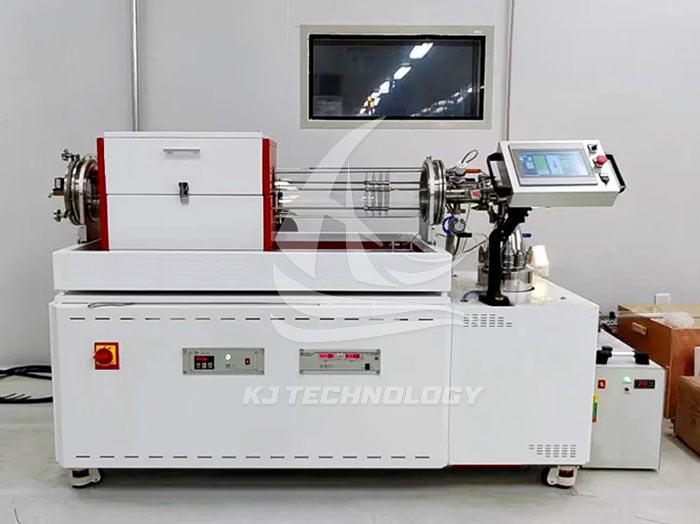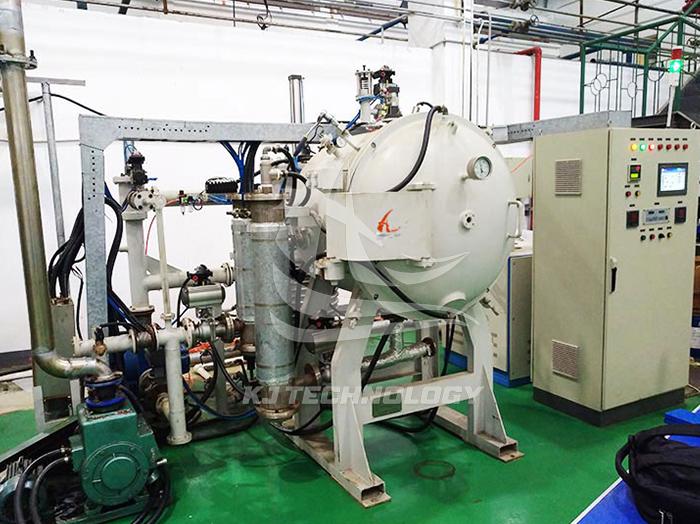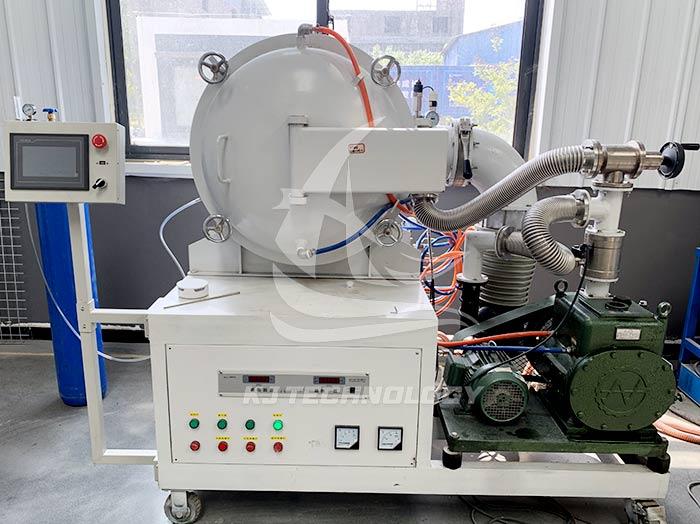What are the advantages of high vacuum brazing electric furnace?
 10-31-2025 Author: KJ technology
10-31-2025 Author: KJ technology
High vacuum brazing electric furnaces demonstrate significant advantages in the field of metal connections by creating a high vacuum environment and combining it with precise temperature control, especially suitable for scenarios that require extremely high quality, reliability, and material performance. The following is a detailed analysis of its core advantages:
1. Ultimate welding quality: no oxidation, no pollution
Vacuum environment isolation of impurities:
High vacuum (10-3Pa to 10-4Pa) can completely eliminate gases such as oxygen, nitrogen, and hydrogen from the air, avoiding oxidation, decarburization, or carbonization reactions of metals at high temperatures. The surface of the welded joint is bright and clean, without the need for subsequent acid washing or polishing, directly meeting the cleanliness requirements of aviation, medical and other fields.
Excellent airtightness:
Vacuum environment reduces defects such as pores and cracks, ensuring high airtightness of welded joints, suitable for sealing scenarios such as pressure vessels and vacuum devices.
2. Wide material adaptability: Breaking through the limitations of traditional welding
Compatible with heterogeneous materials:
It can achieve reliable connection of dissimilar materials such as aluminum copper, titanium steel, ceramic metal, etc., solving the cracking problem caused by the difference in thermal expansion coefficient in traditional welding methods. For example, brazing of titanium alloys and nickel based alloys in aircraft engines.
Active metal welding:
For easily oxidizable metals such as titanium and zirconium, vacuum environment can avoid the formation of surface oxide film, directly achieve atomic bonding, and improve welding strength.
Refractory metal treatment:
Suitable for welding high melting point metals such as tungsten and molybdenum, with precise temperature control to prevent material overheating or melting.
3. High process flexibility: meets complex requirements
Complex structure welding:
It can handle complex geometric shapes such as narrow grooves, blind holes, and multi-layer structures, such as honeycomb sandwich wall panels and miniature circuit boards.
Simultaneous processing of multiple weld seams:
One furnace installation can complete brazing of multiple adjacent welds or components, improving production efficiency. For example, batch welding of intercoolers in automotive turbochargers.
Gradient temperature control:
Support multi-stage program temperature control (such as heating, insulation, and cooling curves), adapt to the brazing process requirements of different metals, and avoid deformation caused by thermal stress.
4. Cost and efficiency optimization: significant long-term benefits
Flux free design:
No need to use expensive metal fluxes, saving material costs while avoiding corrosion problems caused by solder residue and extending product life.
Reduce post-processing:
Welding joints are bright and clean, without the need for acid washing, polishing, and other processes, reducing labor and equipment investment.
High yield:
Vacuum environment reduces defect rate, reduces scrap rate, and significantly improves production efficiency.
5. Environmentally friendly and safe: in line with the trend of green manufacturing
Non polluting emissions:
The entire process is carried out in a vacuum environment, without the generation of exhaust gas or wastewater, in compliance with environmental regulations.
Safety production conditions:
Avoiding the risk of oxidation and combustion at high temperatures, especially suitable for welding flammable metals such as magnesium alloys.
6. Automation and Intelligence: Enhancing Production Controllability
PLC full process control:
Supports 30 segment program programming, multiple program storage, and can export temperature and vacuum curves to achieve unmanned production.
Fault diagnosis and alarm:
Real time monitoring of equipment status, automatic shutdown and alarm in case of abnormalities, reducing downtime.
Data traceability:
Record complete process parameters to meet the requirements of quality traceability in aviation, medical and other fields.
7. Expanding application scenarios: cross industry solutions
Aerospace:
Welding key components such as engine turbine blades and heat exchangers to ensure reliability in extreme environments.
Automotive industry:
Manufacturing aluminum alloy radiators and stainless steel exhaust systems to enhance lightweight and corrosion resistance.
Electronic devices:
Encapsulate IGBT modules and ceramic copper-clad laminates to meet high power density and heat dissipation requirements.
medical apparatus and instruments:
Welding surgical instruments and implants to ensure biocompatibility and long-term stability.
summary
The high vacuum brazing electric furnace has core advantages such as vacuum environment isolation of impurities, precise temperature control, strong material compatibility, and high degree of automation, making it the preferred solution for metal connections in aerospace, automotive, electronics, medical and other fields. It not only improves product quality and reliability, but also brings long-term economic and social benefits to the enterprise through cost reduction and environmentally friendly design. For industries that pursue ultimate performance and efficient production, high vacuum brazing electric furnaces are undoubtedly the ideal choice.








